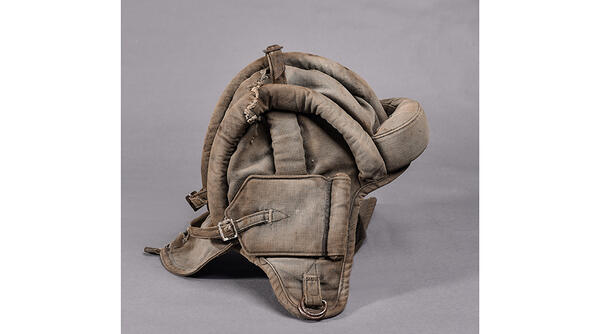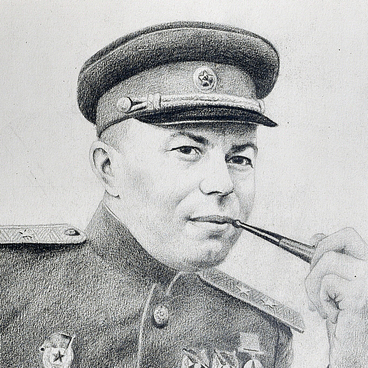The tank communication helmet, part of the equipment of tank crews, not only protected the head from injury, but also served as an intercommunication device between the crews of combat vehicles when carrying out their missions.
Communication helmets with radio equipment in the armament of the Workers' and Peasants' Red Army appeared in 1936. They were made both of leather and with a coating of aviation tarpaulin — a dense wear-resistant fabric of a special weave. Later kersey — multi-layered dense cotton fabric impregnated with synthetic rubber — were used for communication helmets.
On the eve of the Great Patriotic War on June 1, 1941 there were 1392 tanks in the Red Army. By the total number of fighting vehicles and assault guns, the Red Army outnumbered the enemy by 15,687 tanks against 4171, concentrated on the eastern front by Hitler’s Germany. In the first weeks of fighting, when the army was suffering heavy losses, there was no way to quickly replace destroyed vehicles with new ones. Therefore, the Soviet command used fighting vehicles only for direct cover of infantry, actions from ambushes, increase of stability of defense of infantry troops and for realization of local counterattacks.
The Soviet government put a lot of energy into the manufacturing of new tanks, as a result of which their quantity in the field army quickly increased: by May 1, 1942 there were already 4065 tanks in operation, and by November — 6014 tanks. In spring 1942 it became possible to form full-fledged tank corps. There were also formed two tank armies of mixed structure which included tank, mechanized and rifle formations. And in 1943 self-propelled artillery guns (SU-122) which were intended for mobile fire support of tank formations entered the service.
On January 16, 1943 under the decree of the Presidium of the Supreme Soviet of the USSR the rank of Marshal of Armored Forces was introduced. The formation of tank armies of uniform composition began — in January 1943 the 1st and 2nd tank armies were formed. By the summer of 1943 five tank armies participated in battles.
Communication helmets with radio equipment in the armament of the Workers' and Peasants' Red Army appeared in 1936. They were made both of leather and with a coating of aviation tarpaulin — a dense wear-resistant fabric of a special weave. Later kersey — multi-layered dense cotton fabric impregnated with synthetic rubber — were used for communication helmets.
On the eve of the Great Patriotic War on June 1, 1941 there were 1392 tanks in the Red Army. By the total number of fighting vehicles and assault guns, the Red Army outnumbered the enemy by 15,687 tanks against 4171, concentrated on the eastern front by Hitler’s Germany. In the first weeks of fighting, when the army was suffering heavy losses, there was no way to quickly replace destroyed vehicles with new ones. Therefore, the Soviet command used fighting vehicles only for direct cover of infantry, actions from ambushes, increase of stability of defense of infantry troops and for realization of local counterattacks.
The Soviet government put a lot of energy into the manufacturing of new tanks, as a result of which their quantity in the field army quickly increased: by May 1, 1942 there were already 4065 tanks in operation, and by November — 6014 tanks. In spring 1942 it became possible to form full-fledged tank corps. There were also formed two tank armies of mixed structure which included tank, mechanized and rifle formations. And in 1943 self-propelled artillery guns (SU-122) which were intended for mobile fire support of tank formations entered the service.
On January 16, 1943 under the decree of the Presidium of the Supreme Soviet of the USSR the rank of Marshal of Armored Forces was introduced. The formation of tank armies of uniform composition began — in January 1943 the 1st and 2nd tank armies were formed. By the summer of 1943 five tank armies participated in battles.



